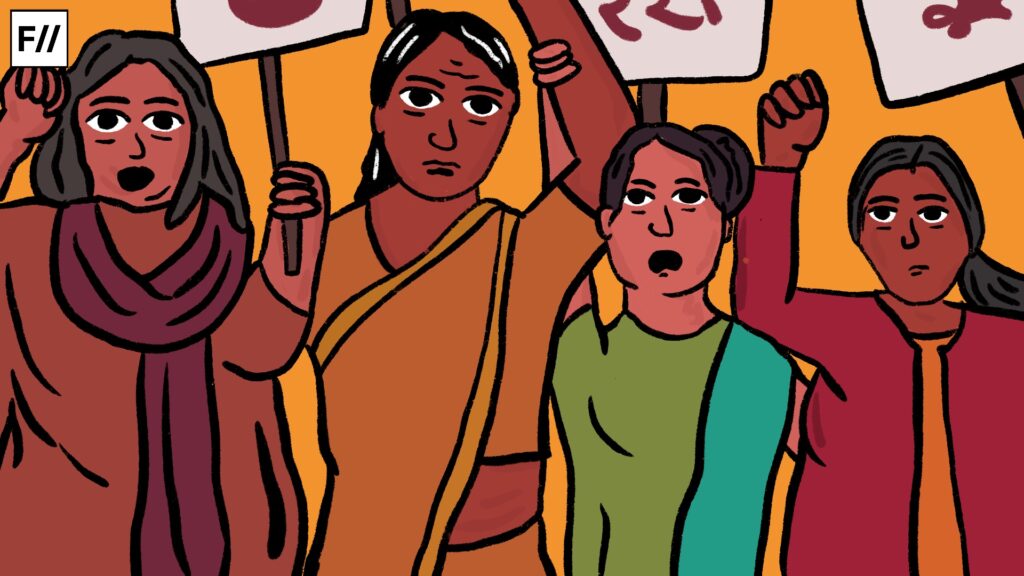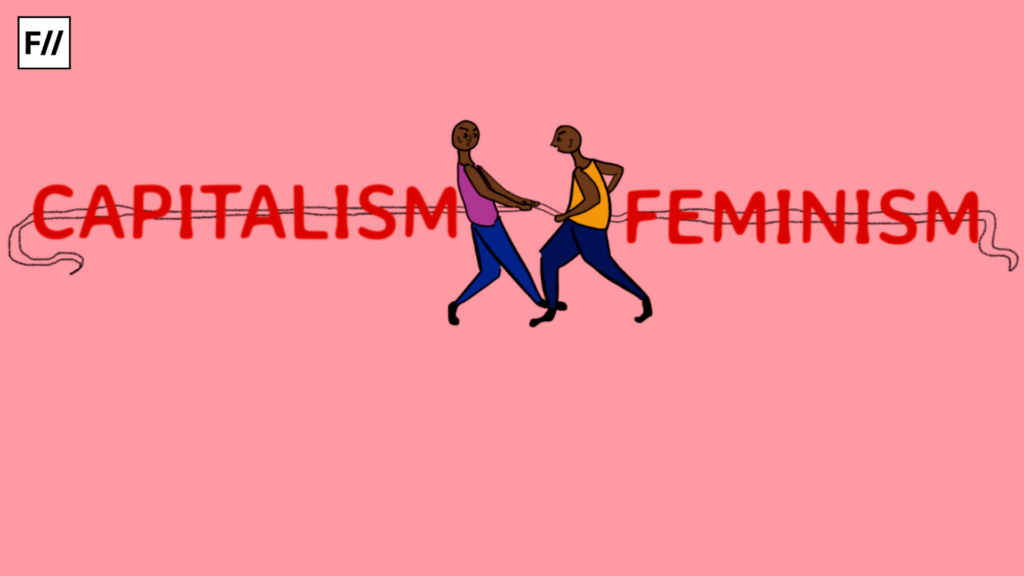The recent report by the World Economic Forum on gender parity sheds light on many important findings. It evaluates the status of 146 countries in terms of gender parity across the world. An initiative that began as early as 2006, has brought to the fore many vital findings over the years. The Covid-19 pandemic sweeped in a wave of change, the jolts of which were felt across all spectrums.
It becomes imperative to ensure that the contributions made by women are also recognised and duly rewarded. Gender disparity only widens the gap towards a healthy economy, sustainable development, and holistic growth of societies.
It was followed by global unrest owing to the Russia-Ukraine conflict. All these issues are deeply interconnected – as they have a dire impact on the world economy. Hence, it becomes imperative to ensure that the contributions made by women are also recognised and duly rewarded. Gender disparity only widens the gap towards a healthy economy, sustainable development, and holistic growth of societies.
Gender parity and its sub-indexes
The global gender gap score in 2023 for all 146 countries included in this edition stands at 68.4% closed, as per the report. We still have a total of 131 years to cover before bridging this gender gap as compared to the projection made in 2022 of 132 years. Before embarking further into the nitty gritty, it is important to define ‘gender parity’. It is a measure of representation, in layman’s language.
Gender parity is a pretty basic indicator. It’s essentially the ratio of men to women, and the closer that number is to one, the better the parity. It would be great to see gender parity (1:1 ratio) in the boardroom, but to shift gender parity, there has to be deeper thinking about gender equality, which takes into account the differences between the sexes, not just the binary genders but also the nonbinary; corporations need to understand the needs of each gender,” which shows that there is a fine line of difference between gender equality and parity.
Dr. Janvi Patel
According to Dr. Janvi Patel, “Gender parity is a pretty basic indicator. It’s essentially the ratio of men to women, and the closer that number is to one, the better the parity. It would be great to see gender parity (1:1 ratio) in the boardroom, but to shift gender parity, there has to be deeper thinking about gender equality, which takes into account the differences between the sexes, not just the binary genders but also the nonbinary; corporations need to understand the needs of each gender,” which shows that there is a fine line of difference between gender equality and parity.

The 18th edition of the report on gender parity by the World Economic Forum focused on the following key areas: economic participation and opportunity, educational attainment, health and survival, and political empowerment. These are the main parameters that the report has been taking into account since 2006. In fact, the 2018 edition of this report also made an analysis of the growing industry of artificial intelligence, with respect to the role that women played in it.
By collaborating with LinkedIn – a major platform for professionals around the world, it was found that women accounted for only 22 percent of the AI workforce as compared to men at 78 percent. This should prompt the countries to develop a more gender-inclusive policy towards equipping individuals with the necessary technical skills. With the fourth industrial revolution on the rise, the importance of AI also comes into the picture. Furthermore, out of all the parameters used, the economic participation and opportunity sub-index shows a drop as compared to 2022 by 0.2 percentage.
Contrarily, it has also shown a rise of 4.1 per cent since the inception of the report in 2006. This drop has come about as a result of the major global dynamics, primarily the pandemic. As an outcome, it will take another 169 years to close the economic gender gap. On the other hand, the highest gender parity score is depicted by the educational attainment subindex at 96.1 percent.
Contrarily, it has also shown a rise of 4.1 per cent since the inception of the report in 2006. This drop has come about as a result of the major global dynamics, primarily the pandemic. As an outcome, it will take another 169 years to close the economic gender gap. On the other hand, the highest gender parity score is depicted by the educational attainment subindex at 96.1 percent. Its stable development since 2006 shows that it will take a time of 16 years to close this gap.

When the 2022 report came around, it was fresh after the immediate aftermath of the pandemic. In the words of Saadia Zahidi, Managing Director at the World Economic Forum, “The economic and social consequences of the pandemic and geopolitical conflict have paused progress and worsened outcomes for women and girls around the world – and risk creating permanent scarring in the labour market.” To cite the example of India, in response to the massive school dropouts, a rapid assessment report was prepared by UNICEF India. It highlighted that nearly 286 million students were affected by the covid 19 pandemic in terms of their school education, out of which 48 percent were girls from pre-primary to upper-secondary schools.
It also led to a ‘gender digital divide’ in India and when it came to accessibility to digital platforms like WhatsApp and YouTube – the usage of girls was 8 percent lower than that of boys. It has a deep-rooted impact on their education. Moreover, in countries where social structures still supersede one gender over the other, it was not surprising to hear stories of girls having to stay back home even post-pandemic because their brother’s education was more important.
As we countdown the days to gender parity along with its various indexes – which according to the WEF report should materialise by 2154, a collective action and policy implementation needs to be initiated by the world leaders.
Due to the lack of funds resulting from a rampant loss of jobs, this seemed like a more viable choice to the parents. Owing to such factors, it becomes tough to derive concrete results for the eradication of gender parity. In fact, with more advancements, women are still deprived of many skills. It is as though their challenges also advance, with each level of opportunity that comes their way. As we countdown the days to gender parity along with its various indexes – which according to the WEF report should materialise by 2154, a collective action and policy implementation needs to be initiated by the world leaders.
Parity and equality
Gender parity is a useful statistical tool to identify key areas of inequality, assess the loopholes and conjure useful strategies. But it is important to note the thin line of difference between gender parity and equality. Further, it is vital to understand that gender equality is not a mere game of numbers. It must involve bringing about substantial change in the lives of women around the world.

Melinda Gates once posed a very important question, “Why do working women get so much support in the Nordic countries?” which is also reiterated in the performance of Iceland – at a percentage of 91.2 and as the 14th top performing country in the gender parity index, 2023. The top list is also inclusive of the other Scandinavian countries, as they lead the index by setting an example of equality and efforts to bridge the gender gap.
Women, leadership and gender parity
“There needs to be legislation that will support enhancing the participation of women in the economy as well as in leadership positions. In order to achieve this, we also need a supportive business environment where we can see gender mainstreaming in both the private and the public sector. Then there is another factor related to the cultural and social norms” says Maha Al Ali, secretary-general, of the Jordanian National Commission for Women.
Maha adds that, “Hence, keeping all this in mind we have set up a strategy for women, endorsed by the Jordanian government in 2020 and in parallel to this, we also had dynamics in terms of modernization, that covered 3 parts: economic, political and public sector. In lieu of this six initiatives were also launched that focus on the women’s participation in Jordan.” These strategies at a national level show a positive development in countries with low scores on the index – such as Jordan which had a score of 122 in the 2022 gender parity index. In 2021, they also partnered with the World Economic Forum and launched the gender parity accelerator. The Accelerator is part of a network of 14 Gender Parity Accelerators convened globally by the Forum. This shows that other countries which are also ranked low on the index, can implement such policies to ensure equality.

Paul Donavan, chief economist, USB global wealth management, talked about how, more than the advancement, it is the usage of the technology that matters – in terms of the fourth industrial revolution. The risk of not having an inclusive workforce indicates that you are just throwing away the talent that could otherwise lead to major benefits. According to him, a ‘mono-cultural’ thinking is bound to lead organisations towards failure. You need both inclusivity and diversity, where gender is a major component.
The gender parity index has indeed left the countries with much food for thought. It is only with collective global efforts and a comprehensive understanding of gender parity – that one can expect to fill this gap faster than the stipulated time of 131 years.
About the author(s)
Nameera (she/her) is a student of media at the Indian Institute of Mass Communication, Jammu. Discourses on gender, feminism, international relations and law interest her. She loves impromptu travelling plans, writing poetry and reading gothic literature.





